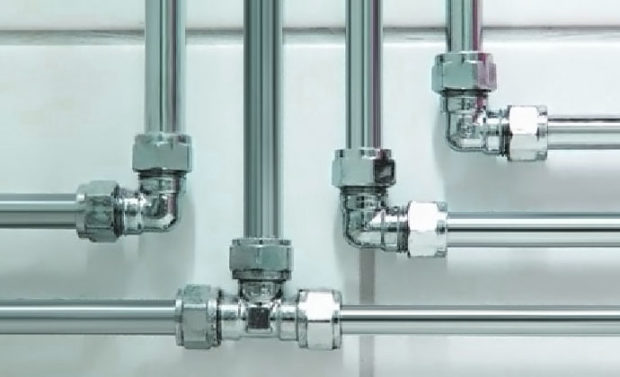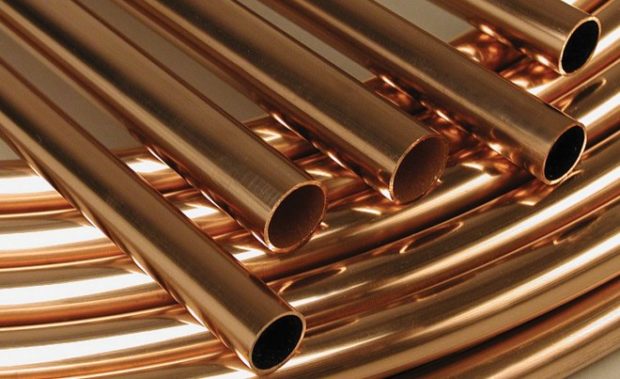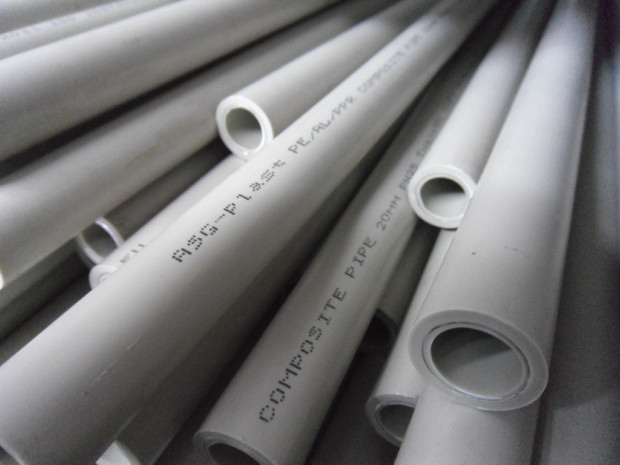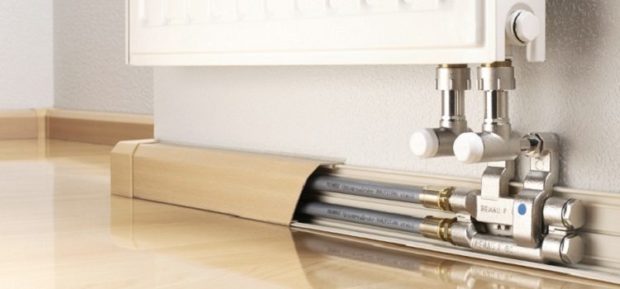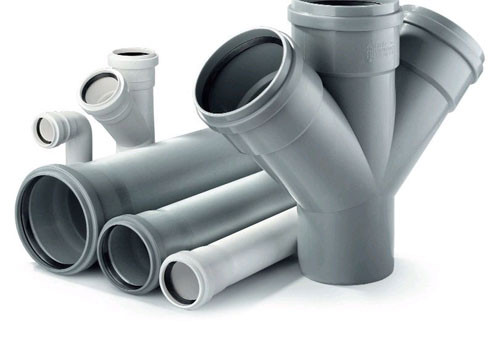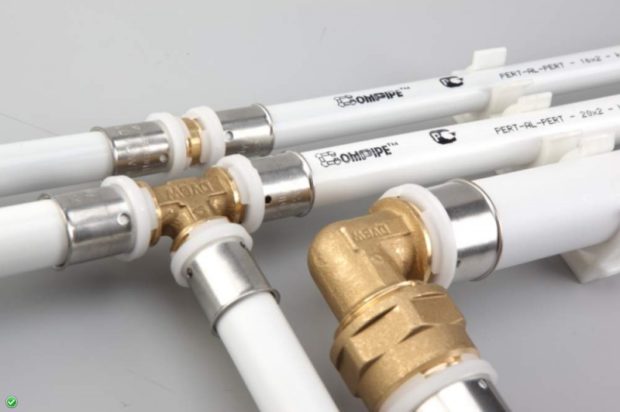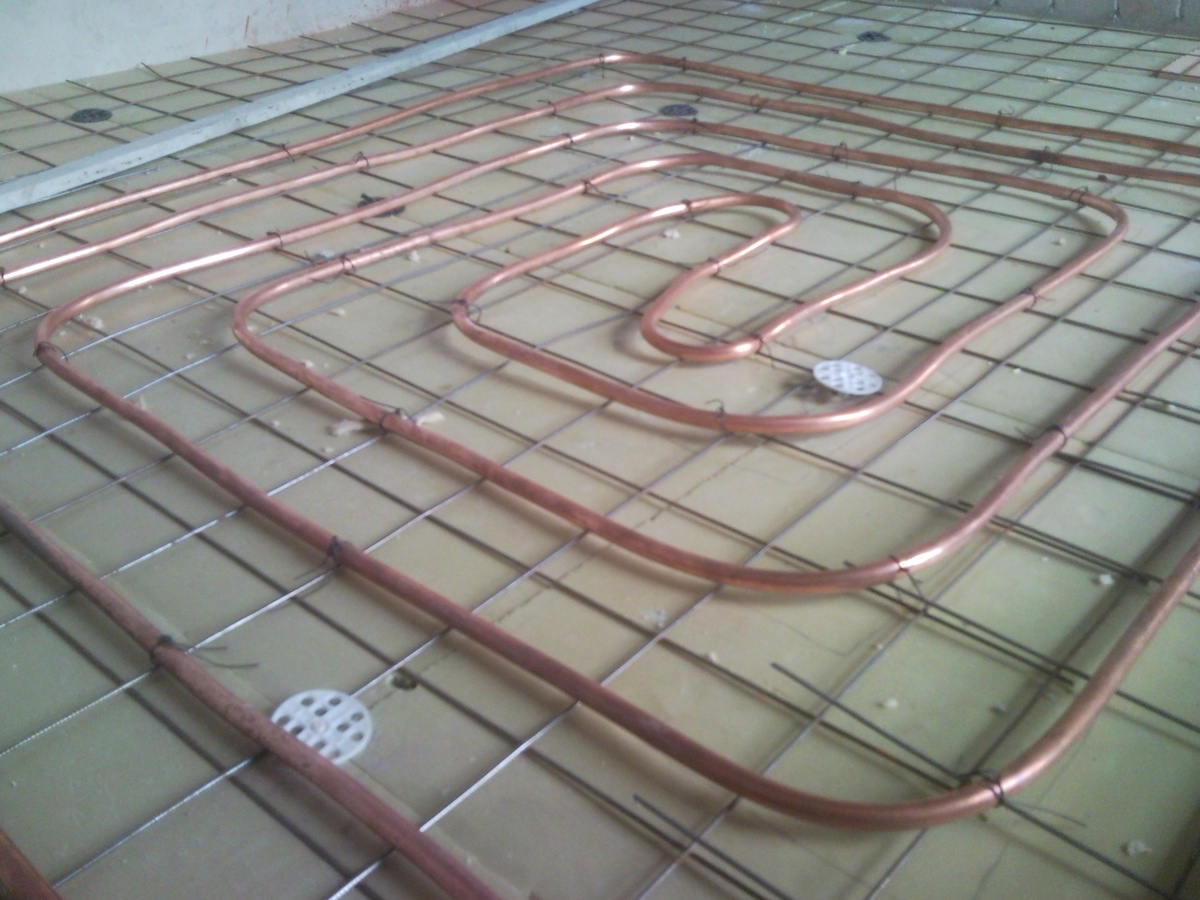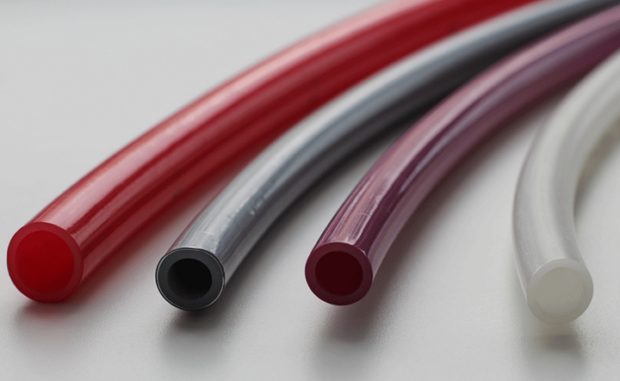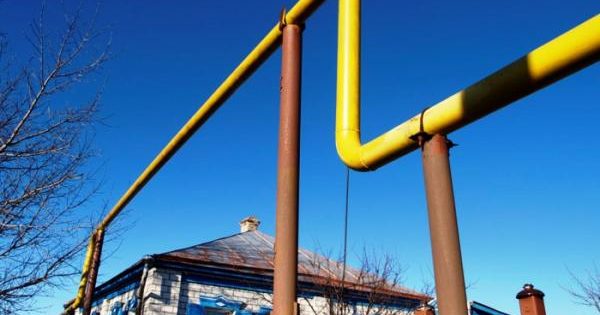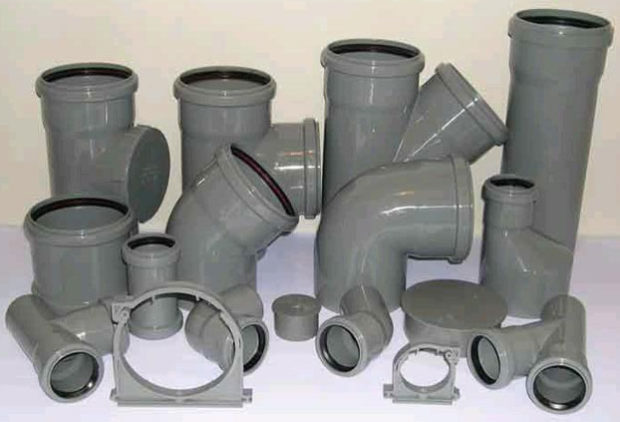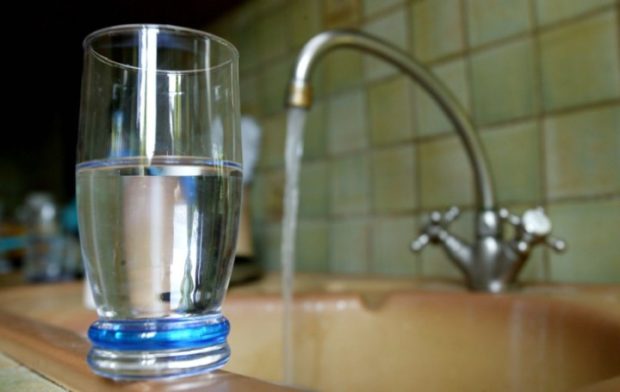8 tips for which pipes for water supply is better to choose: diameter, materials
In the popular film about water, they said that it is the source of life and at the same time the cause of the biggest disasters in the history of mankind. So that water does not become the root of local problems in a single apartment, you need to take care of a reliable system for its transportation. It is an internal pipeline that supplies water to plumbing and some household appliances. The wrong choice can cause insufficient water pressure in the system or, worse, pipe breakthrough. In any case, there is not enough pleasant, so we’ll try to figure out which pipes for water supply are better to choose, which ones are suitable for an apartment, and which ones are for a private house.
Modern housing involves the functioning and cold and hot water supply. In addition, the peak pressure in the system is very different in a private house and an ordinary apartment in a high-rise building. Temperature and pressure conditions Are the two most important factors to consider when choosing pipes for water supply. Some products can be used in almost any environment, while others cannot tolerate the effects of high temperatures, so you will have to take either two types of pipes, or stop at the universal option.
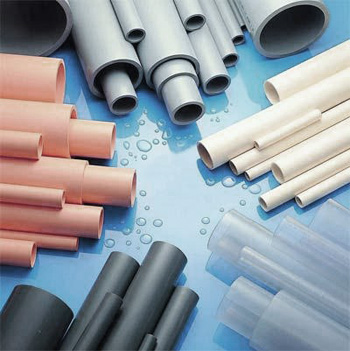
No. 1. Steel pipes for water supply
Not so long ago, steel products were leaders in the organization of domestic water supply. No one even wondered which pipes for water supply should be chosen - steel was installed everywhere. The reason is simple - there were no alternatives. Today, when there is plenty to choose from, the popularity of steel pipes has declined, but there is still demand for them.
The main advantages:
- low price. Steel pipes - this is almost the most affordable option to organize a water supply system;
- high mechanical strength;
- ability to withstand temperatures up to 1000C, sudden jumps in temperature and pressure rises. That's why it universal option that is suitable for both cold and hot water supply.

Minuses:
- low corrosion resistance, however application zinc coating it can somewhat slow down the formation of rzhachina, but over time, the protective layer erases, and the corrosion process starts;
- gradual overgrowing of the inner surface of the pipe, resulting in reduced throughput and deteriorated water quality. In order to extend the service life, the system will have to be periodically cleaned of the formed plaque, but you should approach the choice of funds as carefully as possible - alkaline, for example, will not work and will only aggravate the situation;
- complexity of installation. Installation is performed either with weldingor thanks to threaded connections. In both cases, you can’t do without the help of a professional if, of course, you want to get a sealed reliable water supply;
- high conductivity of pipes.
With proper care, steel pipes can last about 40-50 yearsbut today they are used more for the reconstruction of existing water supply systems than for the organization of new ones. If your choice fell precisely on steel pipes, then pay attention to the wall thickness: there are light, ordinary and reinforced pipes.The thicker the wall, the more durable and reliable the product will be.
Recently, pipes have appeared on the market in which the inside is made of plastic. In a similar way, the problem of corrosion and overgrowing was solved while maintaining the strength properties of steel. Such pipes have a somewhat limited scope of use - they are suitable only if the maximum temperature in the system is 750C and pressure of 16 atm.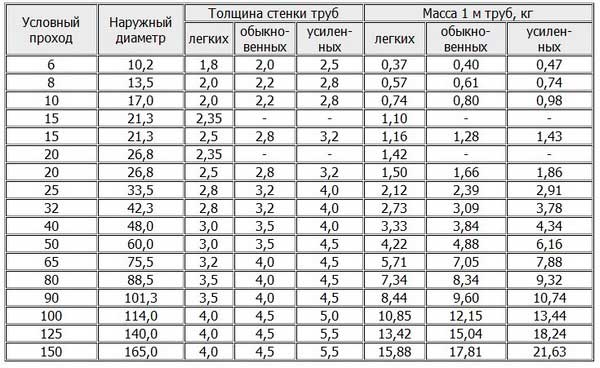
No. 2. Stainless steel pipes
To obtain a corrosion-resistant material, steel is alloyed mainly with chromium. "Stainless steel" looks great, has outstanding performance. It is just as durable as pipes made of ordinary and galvanized steel, withstands pressure and temperature changes, and is not afraid of shock. Moreover, corrosion to such pipes is not terribletherefore, the upper limit of longevity exceeds 50 years. Among the main cons not even the complexity of installation, but the high cost of the material, so stainless steel pipes are rarely used today, although Great for hot and cold water systems.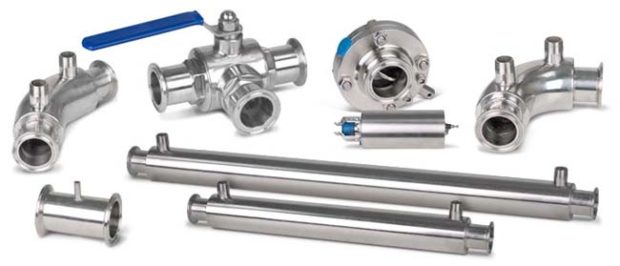
No. 3. Copper pipes
Usually they try to hide the water supply system in an apartment in every possible way, because there are few attractive pipes and various fittings. This is true, but not in the case of copper pipes. They boast unique appearance, therefore, will easily become a decoration of the interior made in retro style. Appearance is not the only advantage of this type of pipe, among other advantages:
- high resistance to temperature deformations;
- longevity up to 70 years;
- resistance to high temperatures and increased pressure in the system;
- corrosion resistance and less tendency to overgrowth compared to steel pipes;
- complete safety for health, since the interaction of chlorine with copper does not form hazardous compounds. Moreover, copper pipes have a disinfecting effect and relieve water from pathogenic bacteria. Unlike steel, copper does not spoil the taste of water.

Among cons:
- high price and small assortment. All that is on the market today is mainly the products of foreign manufacturers. In addition, there are problems with finding the necessary fittings for pipe installation;
- complex installation using soldering;
- low mechanical strength
If you choose which pipes for water supply are better, then copper can easily compete for the title of winner, but their high cost still does not allow them to become a leader in this field. Where flush mounting water supply is impossible, copper pipes can be a very good option.
Number 4. Plastic pipes
Looking ahead, we note that plastic pipes - a great option for organizing water supply cottages or private homes. The product has a multilayer design: around the layer of aluminum foil are the outer and inner layer of plastic. Between themselves they are fastened with durable glue. The metal layer provides the necessary strength, and plastic - lightness, flexibility, resistance to corrosion and overgrowing.
Benefits:
- low price;
- longevity about 35 years;
- resistance to corrosion;
- mineral deposits inside such a pipe do not accumulate, so there is no need for regular cleanings;
- light weight. A pipe 10 m long and 30 mm in diameter weighs about 1-2 kg;
- simple installation, which is carried out using press fittings and a wrench - no welding;
- flexibility and ability to keep fit;
- dielectric outer shell.

Minuses:
- periodically it is necessary to tighten the threaded connections, so it is necessary to provide easy access to them. The reason that the joints are weakening is simple - aluminum shrinks more when the temperature drops than plastic;
- connecting elements do not differ in budget price;
- not the best strength of the joints, and the pipes themselves.
Metal plastic withstands temperature up to +950FROM at a pressure of 10 atm. The pipes will maintain integrity when short-term increase in temperature to +1100FROM at constant pressure. Also, the material will withstand a pressure increase of up to 25 atmospheres at temperatures up to +250FROM.
For arrangement cold water supply you can take pipes in blue and blue - they are adapted to work at a water temperature of no higher than +350C and are cheaper than white pipes that can be used for transportation hot water. For a summer house and a private house a very good option, but for an apartment building you can pick up more suitable pipes.
No. 5. Polyethylene pipes
Pipes from polyethylene, polypropylene and polyvinyl chloride are often combined into a common group of plastic pipes. Despite the similarity of some characteristics, each of these materials has a set of unique properties, and we will begin by considering polyethylene structures.
Note immediately, it is necessary to separate pipes made of low pressure polyethylene and crosslinked polyethylene. They differ in temperature resistance. The first can withstand temperatures no more than +400C, suitable for organizing cold water, often used to transport water from wells to a private house, as they are not afraid of frost and do not burst when freezing water.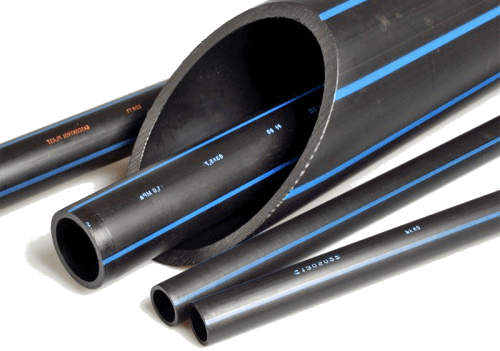
XLPE pipes It is allowed to use in the hot water supply system, but they also cost more. For installation, sealing gum is not used - the necessary degree of tightness is achieved when the fitting is crimped by a pipe.
A number of specialists call cross-linked polyethylene pipes the best option for organizing water supply. They are resistant to corrosion, do not overgrow, are inert to all substances that are contained in water, and make it possible to create durable compounds. Of cons not the lowest price and the need for special equipment for installation.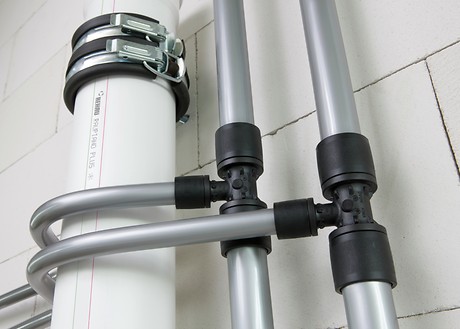
No. 6. Polypropylene pipes
Polypropylene pipes - actually ideal for organizing water supply. May be unreinforced and reinforced. The former are suitable only for cold water supply, the latter are used in heating, and in hot water supply. The pipe can be reinforced with aluminum, fiberglass or other materials. Reinforcement increases strength and reduces thermal elongation of polypropylene. The best option is fiberglass reinforcement.
 To date, the highest quality reinforced pipes are produced in Germany. Detailed technical specifications and a list of facilities where such piping systems are installed can be found on the website of the representative of the German aquatherm GmbH plant.
To date, the highest quality reinforced pipes are produced in Germany. Detailed technical specifications and a list of facilities where such piping systems are installed can be found on the website of the representative of the German aquatherm GmbH plant.Advantages of polypropylene pipes:
- durability up to 50 years;
- ability to withstand temperature inside pipes up to + 90-950C and pressure up to 20 atmospheres (this applies to the reinforced version);
- relatively simple installation. Pipes are connected using a special welding machine for polypropylene. It is not difficult to work with him; it will take a little time to train and bring the process to automatism;
- strong connections;
- such pipes will withstand even the freezing of water inside them;
- resistance to corrosion;
- sufficiently high strength;
- relatively low price
Among cons fear of high external temperatures, so this is not an option for fire hazardous areas. In addition, even when reinforced with aluminum or kapron thread, the material maintains a high level of thermal deformation, therefore, without using insulation with hidden pipe routing, or compensators with an open wiring can not do. If you weigh all the pros and cons, then it is better to choose polypropylene pipes for water supply at home.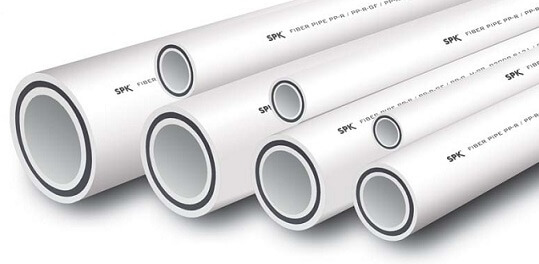
Number 7. PVC pipes
PVC pipes used only for cold water supply, withstand temperature jumps up to +650FROM, pressure up to 16 atmospheres, often used for water supply to the house, for internal wiring - rarely.
Among the benefits:
- resistance to aggressive environments;
- low weight;
- resistance to corrosion and overgrowing;
- fire resistance;
- longevity about 50 years;
- relatively simple installation high tightness of connections.
Among consIn addition to instability to high temperatures, it is worth noting the sensitivity to scratches and the complexity of disposal.
Number 8. The diameter of the pipes for the water supply inside the house
Properly choose the diameter of the pipes for the water supply in the house and apartment will help a specialist, taking into account the mass of parameters. However, you can cope on your own, given factors on which the inner diameter of the pipeline depends:
- water pressure in the system. The lower the pressure, the larger the diameter must be taken. If, with a low pressure, pipes with insufficient diameter are installed, then the output from the crane get a thin stream of water;
- water supply length. The longer the water supply system comes out, the more pipes should be. So, for example, for systems less than 10 m long, pipes with a diameter of 20 mm can be taken, for systems up to 30 m long - 25 mm pipes. If the length of the water supply is even greater, it is better to take pipes with a diameter of 32 mm. These are standard guidelines.;
- number of turns. Each turn slightly reduces the pressure, so if their number in the system is increased, then the diameter is better to take with a margin;
- number of consumption points. The more water intake points in the apartment, the larger the diameter of the pipeline should be;
- Also, the choice of the required pipe diameter is influenced by parameters such as water temperature, parameters of pumping equipment, etc.

With an average water velocity of 0.02 km / s in pipes, the throughput of a system with a diameter of 25 mm will be 30 l / s, and for a pipeline with a diameter of 32 mm, it will already be 50 l / s. It all depends on the required level of consumption. When organizing the water supply system of a private house, you will, of course, have to think carefully and even apply special formulas, but in ordinary apartments, as a rule, wiring has already been introduced, the required diameter is 15-20 mm.
Finally, we note that saving and taking pipes with a smaller diameter than is necessary for the normal operation of the system is not worth it. Consider the maximum peak values of temperature and pressure in the system - this will give confidence that the pipes will survive the water hammer, remaining intact. For an apartment building, for example, the safety margin for pressure should be 12 atmospheres.

